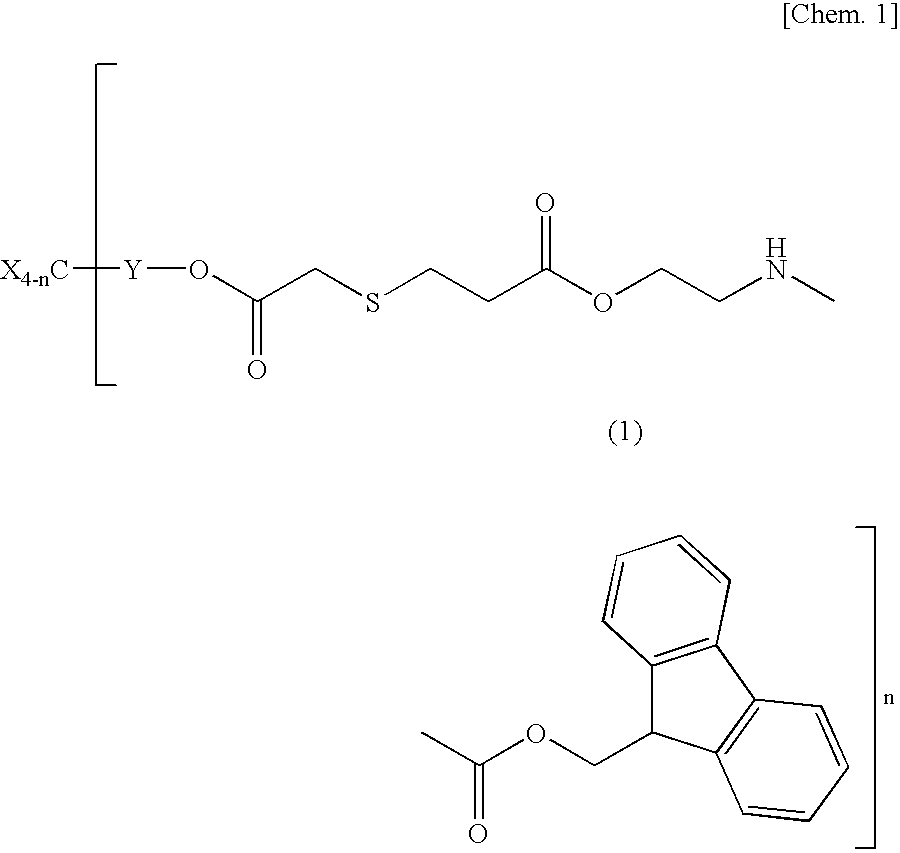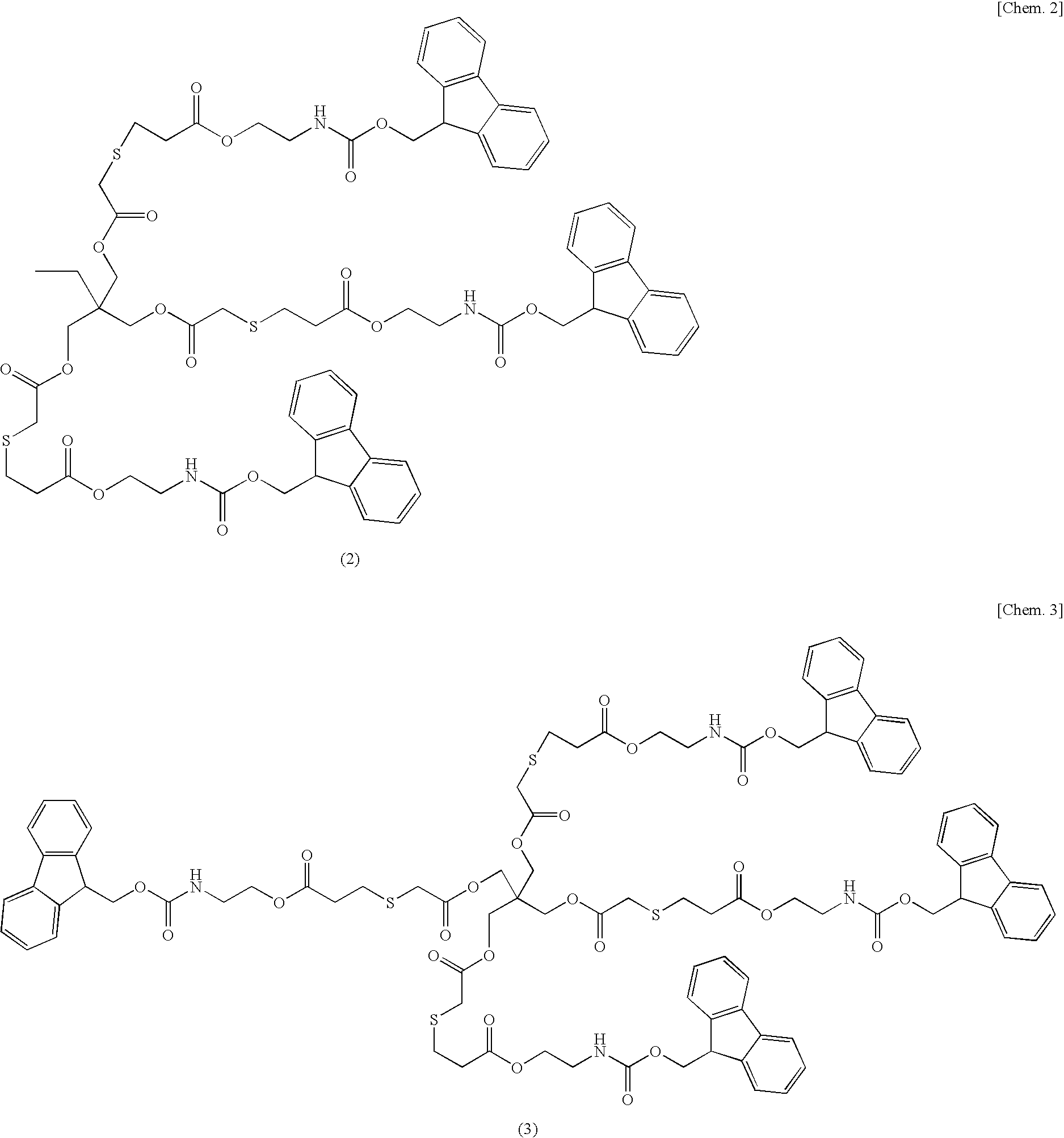Base multiplying agents and base-reactive curable compositions
a technology of multiplying agent and composition, applied in the field of base multiplying agent and base-reactive curable composition, can solve the problems of insufficient solubility of urethane compound, inability to enjoy the effect of addition thereof, and ineffective cure of epoxy compound, etc. small steric hindrance of x
- Summary
- Abstract
- Description
- Claims
- Application Information
AI Technical Summary
Benefits of technology
Problems solved by technology
Method used
Image
Examples
example 1
Synthesis of Base Multiplying Agent Flu3
[0073]The base multiplying agent Flu3 represented by the formula (2) was synthesized according to the following (A) to (C) in this order.
(A) Synthesis of Fluorenylmethanol
[0074]Fluorenylmethanol was synthesized according to the formula (5) below.
[0075]
[0076]60 g (0.36 mol) of fluorine was dissolved in 1,500 mL of dehydrated THF. Thereafter, 225 mL of a butyllithium hexane solution (1.6 M) was slowly added dropwise thereto at 0° C. in an argon gas atmosphere. 12 g of p-formaldehyde was then added, followed by stirring at room temperature for 5 hours. After stirring, 600 mL of a saturated sodium bicarbonate water was added, the mixture was extracted with diethyl ether, and the organic layer was washed twice with saturated saline. After drying over anhydrous magnesium sulfate, the solvent was distilled off. The resulting solid in a paste form was recrystallized from a mixed solvent of hexane and ethanol to obtain 50 g of fluorenylmethanol in a wh...
example 2
Synthesis of Base Multiplying Agent Flu4
[0092]The base multiplying agent Flu4 represented by the formula (3) was synthesized according to the following manner. The base multiplying agent Flu4 was synthesized according to the formula (8) below.
[0093]
[0094]2.0 g (6.0 mmol) of the acrylate monomer synthesized according to the formula (6) in Example 1, 0.65 g (1.5 mmol) of PETG (tetrathiol derivative) and 40 mg of tri-n-butylamine as a catalyst were dissolved in 15 mL of dehydrated dichloromethane, and the solution was stirred at room temperature for 3 days. After stirring, the solution was washed with 2M hydrochloric acid and then saturated saline, and dried over anhydrous magnesium sulfate. Thereafter, an oil obtained by distilling the solvent off under reduced pressure was frozen in a freezer to obtain Flu4. It was confirmed that the resulting compound had the aforementioned structure represented by the formulae (3) and (8) by measuring with 1H-NMR and MALDI. The measurement result o...
PUM
| Property | Measurement | Unit |
|---|---|---|
| photosensitive | aaaaa | aaaaa |
| acid | aaaaa | aaaaa |
| solubility | aaaaa | aaaaa |
Abstract
Description
Claims
Application Information
 Login to View More
Login to View More - R&D
- Intellectual Property
- Life Sciences
- Materials
- Tech Scout
- Unparalleled Data Quality
- Higher Quality Content
- 60% Fewer Hallucinations
Browse by: Latest US Patents, China's latest patents, Technical Efficacy Thesaurus, Application Domain, Technology Topic, Popular Technical Reports.
© 2025 PatSnap. All rights reserved.Legal|Privacy policy|Modern Slavery Act Transparency Statement|Sitemap|About US| Contact US: help@patsnap.com



